Larrin Thomas Records the History of Tool Steel in Latest Book
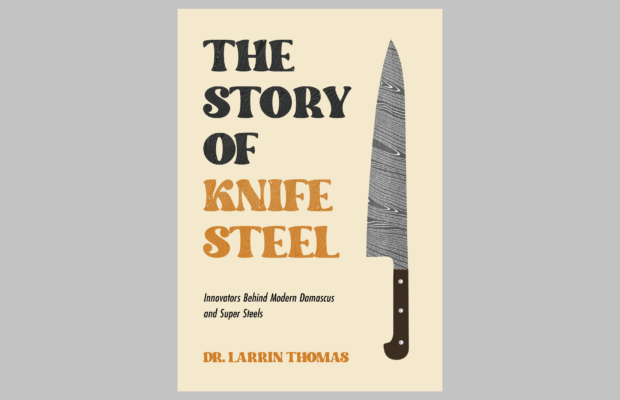
Larrin Thomas, the metallurgist behind MagnaCut, co-creator of ApexUltra, and founder of the indispensable Knife Steel Nerds website, released his second book earlier this week. It’s called The Story of Knife Steel: Innovators Behind Modern Damascus and Super Steels, and Thomas describes it as an exploration of the intertwined worlds of knifemaking and metallurgy, comprised of his own research and also many first-hand accounts from the people involved.
We conducted an email interview with Thomas about The Story of Knife Steel, which we’ve reproduced in full below. Enjoy!
The Story of Knife Steel is available now in physical form (hardcover or softcover), as well as digitally in a PDF.
Tell me about the origins of this book; when did you decide you wanted to write something like this, and how did you go about doing it?
This book didn’t have a clear start, I kept changing my mind about what it was I was doing. In past articles on individual steels on my website I usually had a history paragraph at the beginning. These histories were much more difficult to write than I had originally anticipated. Often I spent more time writing that initial paragraph than the rest of the article. After all the work in finding sources to track down information on those steels I decided to write a couple articles putting together a broader picture on steel history. I wrote up a Part 1 and Part 2 for my website but the Part 2 was already too long to be a single article and I already had many areas left to write about. I got busy with ApexUltra and Blade Show and set it aside for a couple months. After Blade Show I suddenly got interested in the history of Damascus patterning because it is largely unrecorded. There are a couple articles on individual aspects out there, Steve Schwarzer has written articles about history from his perspective, but definitely nothing out there covers the whole history. I bought a bunch of old books like Knives Annuals and Jim Weyer books (a popular knife photographer from back in the day) to find when different patterns showed up. Then I interviewed every Damascus maker I could get on the phone. I wrote up this Damascus history and it was way too long for a single article or even a series of articles. I had 12 chapters on modern Damascus history and I had no idea what to do with it.
Would I further expand the Damascus content and publish a book on Damascus? Or would I do a full history of knife steel? The full history of knife steel seemed too big and daunting of a project. What do I have to say about Bob Loveless and Bill Moran? How am I going to find which companies and knifemakers were significant to heat treating and steel selection in knives? I thought my knife steel history would be relatively easy to write because I had spent the last few years finding sources and references; the hard work was done. Now my project had just expanded to be more research than I had ever done. It became an obsession where I felt this history could only be recorded by someone with my unique combination of passions: knives and steel metallurgy. It was in danger of being lost and I needed to save it.
The book is full of vintage ads, photos of knives, and firsthand accounts from knifemakers, founders of knife companies, and metallurgists. Why did they do what they did? Why introduce that steel into knives? Why add that element to steel? A history of the modern knife industry, the development of tool steels and stainless steels, and the evolution of Damascus patterning and forge welding techniques. The end result is a very satisfying collection of stories from impressive, innovative individuals. I can’t wait to hear what people think about it.
Compared to many other aspects of the knife world, it seems like the history of steel specifically is relatively underdocumented. Do you agree with this and do you hope that books like yours will change that?
I thought that the history of steel would be easy to find. Just google “History of O1 steel” and surely it will pop right up. No. There is no book or article on where the steel came from, and such is the same for the majority of steels used in knives. Sometimes there are individual articles from decades before that mention the development of these steels but they don’t name them by any name we would now recognize. They refer to some trade name long forgotten. And those articles are lost in obscure trade journals which don’t come up in an internet search. This book is by far the most complete record of tool steel history ever recorded. Engineers and metallurgists aren’t very good at recording their own history.
In your article announcement you allude to the divide between knife makers and metallurgists; can you speak a little more as to why that is, and what can come from that gap closing?
It’s not that metallurgists and knifemakers have an adversarial relationship, but they often live in different worlds. A steel company has many customers with different needs, and knife steel is just one tiny niche within that market. However, my book talks about several significant events where metallurgists and knifemakers came together and made something special. In recent years a famous example is CPM-S30V, developed by Crucible metallurgists like Dick Barber along with knifemakers like Chris Reeve. However, there are significant, world-changing events which resulted from similar relationships. The very beginning of alloying of steel, i.e. adding an element other than carbon, began when scientist Michael Faraday worked with cutler James Stodart to try to reproduce the famous Wootz sword steel. And stainless steel was commercialized for the purpose of use in table knives. I have several more examples in my book.
Who do you envision as the ‘ideal reader’ for The Story of Knife Steel? Knife enthusiasts, makers, industry people – or maybe even non-knife enthusiasts?
This book has a broader audience than my prior book Knife Engineering, which was primarily targeted at knifemakers. Certainly it helps if you are already a knife enthusiast or knifemaker, but I think most people could read it. For knife enthusiasts that think they have no interest in steel, The Story of Knife Steel is perhaps the best introduction to the development of the modern knife industry that is available in any current book. I covered the formation of specialized knife companies from Buck, Gerber, and Al Mar to companies like Microtech and Spyderco. And the formation of the custom knife industry in the 1960s and 1970s. A lot of debates that continue to today like “stainless vs carbon steel” and “forged vs stock removal” go back to those times.
I have always thought that “history” is boring. Names and dates are boring. This book tells stories; the words of the people that did great things. If you (yes, you), think a book on history isn’t for you I think you should give it a shot anyway. I don’t care on what date such and such battle occurred. But how and why someone invented something great is much more interesting, at least to me.
In gathering your material for the book, what were some of the things that it surprised you to learn?
I thought I knew a lot about the custom knife industry before writing the book. I grew up with it because of my father, Devin Thomas, known for his Damascus steel. I was surprised to learn that the custom knife market as it stands today relies so much on A.G. Russell. There were custom knifemakers before, but the number of them really grew, and a real functioning market was developed, because of the formation of the Knifemaker’s Guild. That all started with A.G. Russell. I had spoken to him in 2018 shortly before he died for an article I was writing about the evolution of how people viewed stainless steel. I loved him, he was awesome. But even to me he was mostly the name on the cover of knife catalogs that we got in the mail that I used to look at and dream about the awesome new pocket knife I wanted. A.G. is a legend. Every knife enthusiast should know who he is. I talk about many legends throughout the book. Even some people who get a single offhand mention in the book, just about any name in it is worth learning more about. I gave an introduction to everybody I could find an excuse to include, anyone who impacted knife steel in some way. Then that allowed me to describe some of their contributions to the broader knife world: lock mechanisms, designs, etc. I also have references in the back of the book, all of my favorite references are in bold: books or articles so you can learn more about the people who built the knife industry.
Do you plan on following up with any companion volumes? Maybe a book detailing earlier eras of steel?
Before I wrote Knife Engineering I had no intention of writing a book; that’s why I had my website (KnifeSteelNerds.com). But I thought that it would be helpful to have a single volume where people could learn the whole picture of steel, heat treating, and edge geometry and how to optimize them for knives. So I wrote a book even though I didn’t see myself as a book author. That was the only book I was ever going to write and I was perfectly happy with that. Then as I explained already, I kind of fell into writing this book because I just had so much material it couldn’t be contained in a few articles or a few YouTube videos. It had to be a book. So I’m an accidental book author twice now. And like last time I am telling myself and everyone who will listen that this is the last one I will ever write. It’s just so much work. Hopefully I don’t accidentally write another one.
The information provided by KnifeNews.com (the “Site”) is for general recreational purposes only. The views and opinions expressed on the Site are those of the author or those quoted and do not necessarily reflect the views of any entities they represent. All information on the Site is provided in good faith, however, we make no representation or warranty of any kind, express or implied, regarding the accuracy, adequacy, validity, reliability, availability, or completeness of the information on the Site. Under no circumstance shall we have any liability to you for any loss or damage as the result of the use of the Site or reliance on any information provided. Your use of the Site and your reliance on any information on the Site is solely at your own risk.


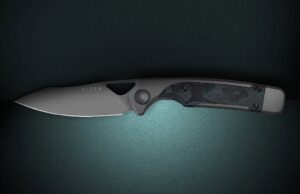
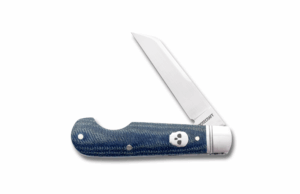
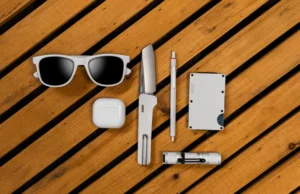
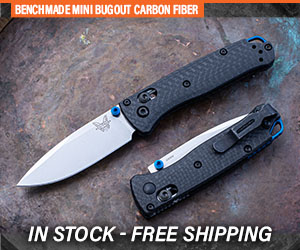





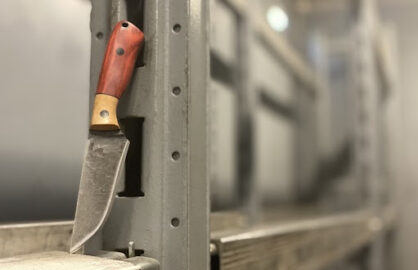

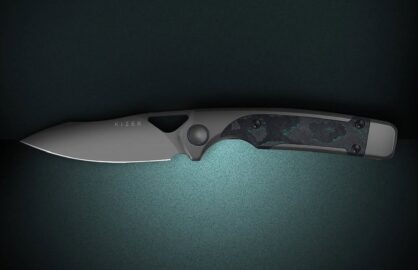
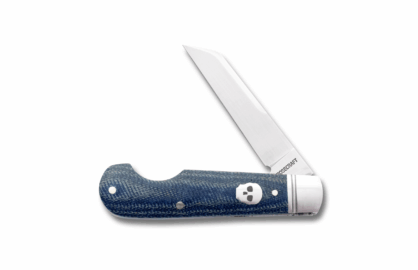

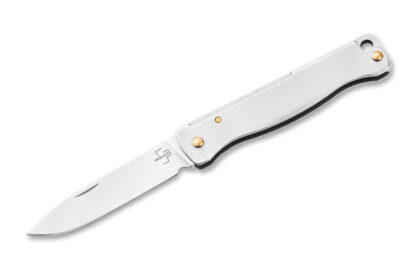
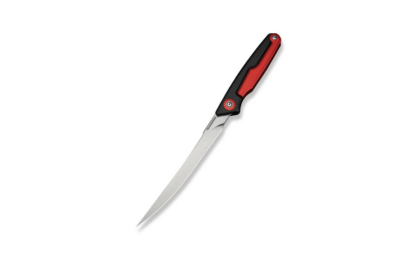



0 comments